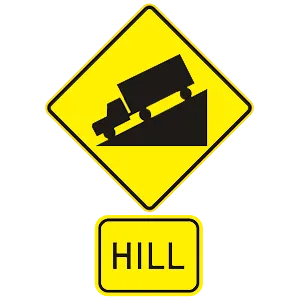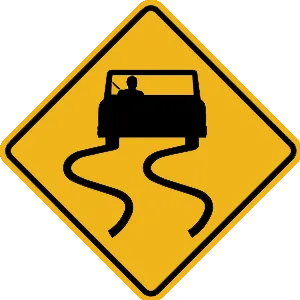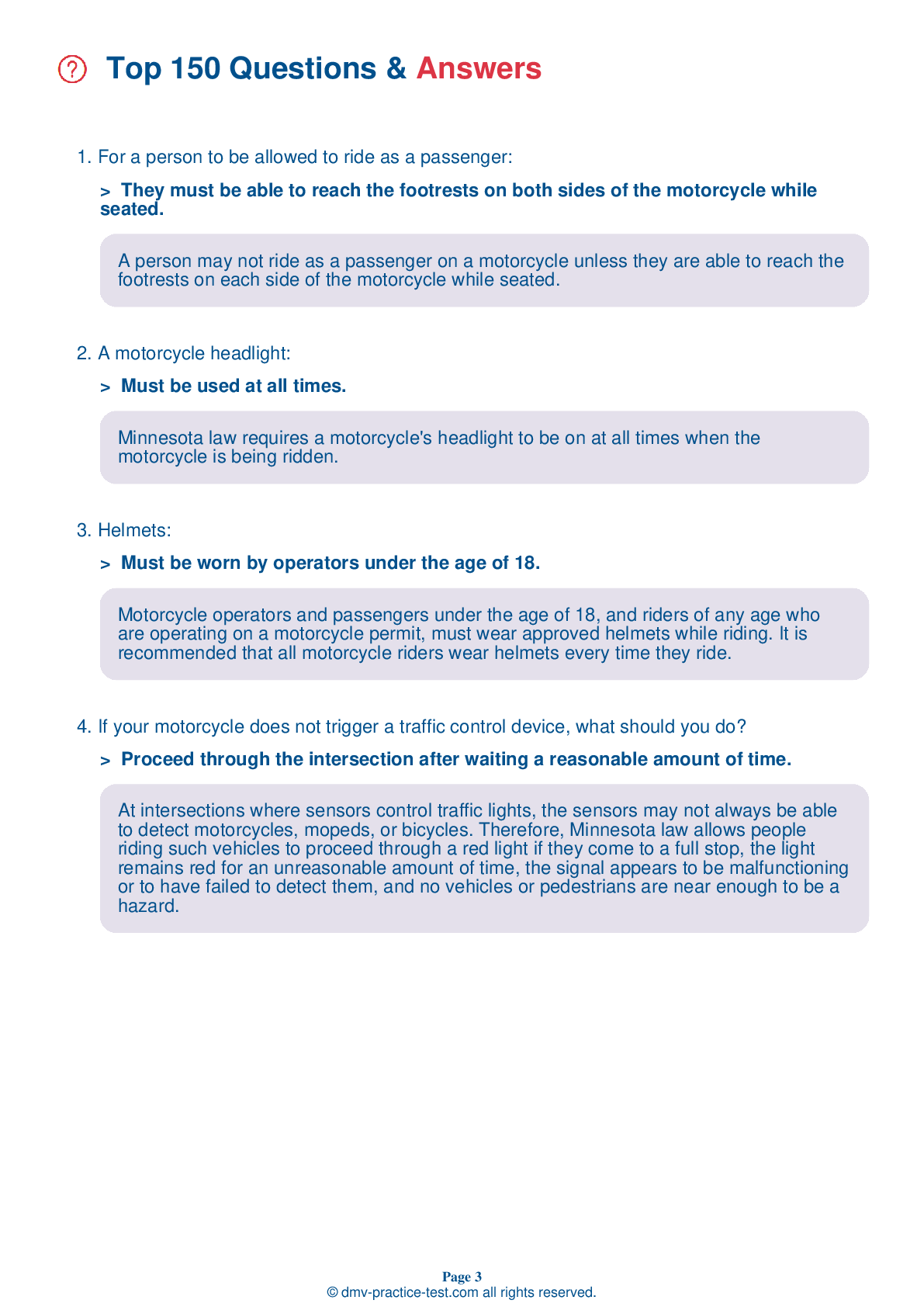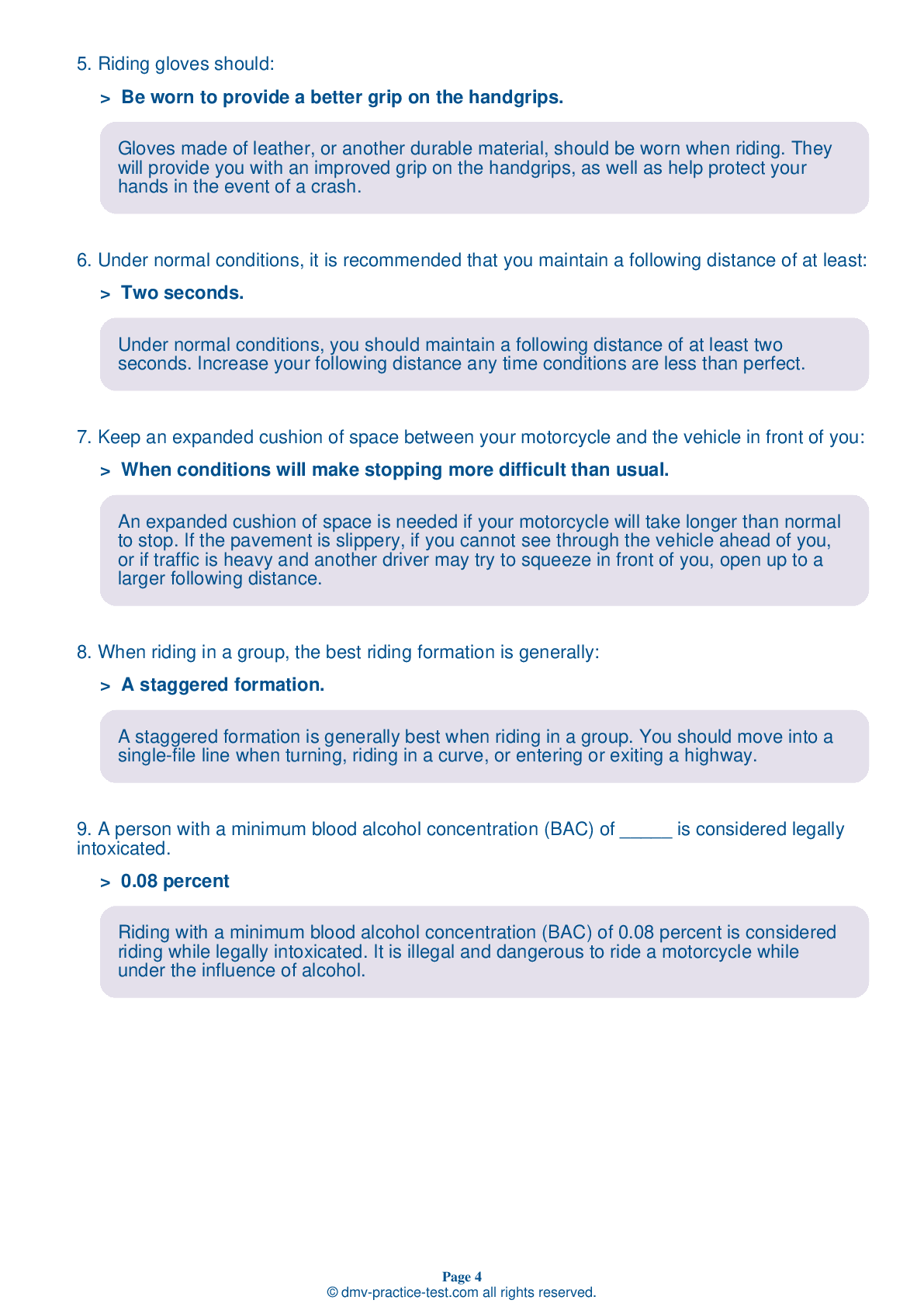Motorcycle Test | License MN 2026 | FREE Online Practice! #5 Page 3 of 5
Take this FREE motorcycle test (license in MN 2026) to check your knowledge of the road rules. To improve your results, download a motorcycle handbook online, study theory, and practice for free on our website. Still worried about how to get a motorcycle license in Minnesota in 2026? Check our website for more sample tests, train as much as possible, and boost your grades!
17 . A proper lane position should do all of the following, except:
A properly chosen lane position should provide a number of benefits, including an increased ability to see others and to be seen. It should help you avoid wind blasts, other drivers' blind spots, and surface hazards. Your lane position should discourage other drivers from trying to share your lane and provide you with an escape route, should a hazard arise.
18 . This sign means:

Warning signs are usually diamond-shaped with black markings on a yellow background. They alert drivers to upcoming hazards. This sign indicates that drivers are approaching a steep hill and should prepare to adjust their speeds to continue to drive safely.
19 . If your motorcycle does not trigger a traffic control device, what should you do?
At intersections where sensors control traffic lights, the sensors may not always be able to detect motorcycles, mopeds, or bicycles. Therefore, Minnesota law allows people riding such vehicles to proceed through a red light if they come to a full stop, the light remains red for an unreasonable amount of time, the signal appears to be malfunctioning or to have failed to detect them, and no vehicles or pedestrians are near enough to be a hazard.
20 . Which of the following is true?
The front brake of a motorcycle is more powerful than the rear one, providing at least 70 percent of the total stopping power. Always use both brakes any time you slow or stop.
21 . During the day, you should:
You should always have your headlight on when riding, even during the day. This can make you twice as likely to be noticed by other drivers.
22 . A motorcycle headlight:
Minnesota law requires a motorcycle's headlight to be on at all times when the motorcycle is being ridden.
23 . This sign means:

This sign warns that especially slippery conditions exist when the road is wet.
24 . When should the front brake be used?
A rider should always use both brakes every time they slow or stop.
See the exact questions that will be on the 2026 Minnesota DMV exam.
99.2% of people who use the cheat sheet pass the FIRST TIME
Jeneen was tired of paying $5/gallon. She got herself a scooter that required the motorcycle license. She studyed the motorcycle test cheat sheet and passed her test the next day!
Christopher tells us how he knew nothing prior to obtaining the motorcycle study guide, and he only got one question wrong because he clicked on the wrong answer by mistake.



